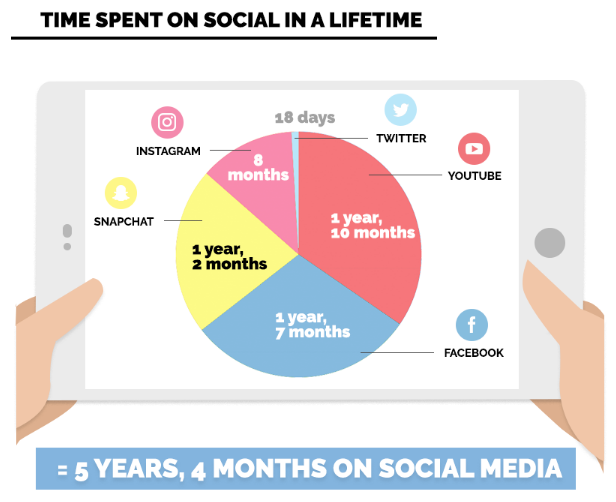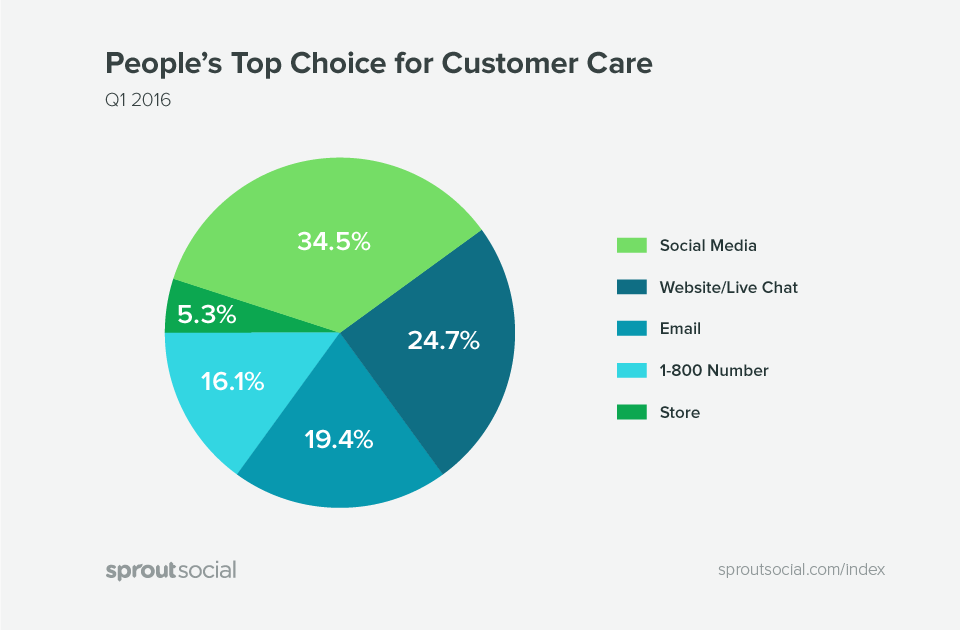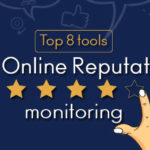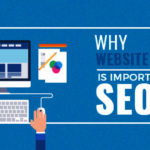Social media was considered to be a passing fad a few years ago. Today it is a proven platform for businesses to reach target audience and grow revenue. Businesses are taking social media seriously. Facebook reported $9.16 billion in advertising revenue in the second quarter of 2017.
Social media platforms such as Facebook, Instagram, LinkedIn and Twitter help businesses reach out to their prospects personally and develop relations. Here are some ways businesses benefit from social media marketing:
- Builds a Brand and Brand Loyalty
A brand is built by consistent messaging and presence. According to Global Web Index, people spend more than two hours on social media platforms daily. You are missing out on precious customer attention if you are not active on social media.
Source : MarketingProfs
Having a profile on social media allows you to post and interact with your target market. A Study by Convince and Convert has also shown that people who follow a brand on social media are more loyal to that brand.
A profile on these platforms ‘humanizes’ your brand. You can like and comment on your followers’ posts like a friend. This is great because people like to do business with humans and not a company without any human traits.
Social media is a necessary platform to be on and give your audience a seamless experience between the offline and online branding efforts.
- Reach more people
In traditional marketing, businesses had to spend big money to reach their target customers. Advertisements in print and television assured no guarantee that your target audience would see it despite investing huge amount.
This has changed with social media. Now you can reach the right target audience for free! Followers increase consistently with time as long as you post content regularly. What’s more, users who follow you are interested in your brand and ready to engage with you. This is much better than placing a hoarding that most people don’t even look at.
It is also an excellent platform to reach the global audience. Viral marketing can increase your followers exponentially overnight. Although there is not set recipe for a viral content you must strive to post content that connects with your audience and is something that they identify with.
- Source of Inbound traffic
Social media is an important source of traffic in inbound marketing. It is a channel for content distribution and is great to attract new visitors to your site.
Every post, infographic or video you share can lead your followers to your site. This is the reason why more than 58% of marketers who have been using social media for one year or longer see improved search engine rankings (Source: Social Media Examiner, 2015). Most of the social media platforms such as Facebook and Twitter allow you to include a link in your post.
Make sure to include a call to action in your post. This way social media will give you a steady flow of traffic to your website. This works great for your inbound sales funnel as more targeted visitors convert to leads and eventually customers.
- Get Detailed Customer Profile
Never in the history of marketing have marketers been able to gather so much data about their audience. You can know the locations, interests, like and dislikes of your followers on social media. Social media is a gold mine of data for marketers. You can know your customers and prospects intimately by the conversations they are having and concerns they are voicing.
A simple search on your industry or topic can give you large amounts of data for research.
This detailed data on your followers can help you in market research, business idea validation and customer profiling.
- Grow a Community
Social media is a two way communication platform where you can grow a community. Some companies are using it to foster brand loyalty among their current customers. This can be done by encouraging conversations between customers.
You can also share tips on product usage and lifestyle. For example, if you are a company selling bicycle you can share information on fitness and diet to encourage a healthy lifestyle among your customers. This lets the customers know that you care and increases chances of them recommending you to their friends.
Brands are also using Facebook pages for handling customer complaints, feedback and product training. In fact social media has now emerged as the top choice for customer care contact.
Source: Sproutsocial
- Increase Conversion rate
Yes! Social media has a direct impact on your sales too. Studies have shown that social media has a 100% higher lead-to-close rate than outbound marketing.
This is because you can get highly targeted leads from social media. Only users who are interested in your brand follow you and are more likely to visit your website. Also, a higher number of social media followers tend to improve trust and credibility in your brand which then drives higher conversions.
- Support HR and R&D
Social media has benefits beyond sales and marketing too. Human resource can use social media for recruiting, employee engagement and monitoring employee sentiment. According to Jobvite, 59% of recruiters rated candidates found through social media as “highest quality”. LinkedIn has become a major source of data on prospective candidates for HR.
Contacts and conversations on social media can also be helpful for product development and research teams. Social media is also the place for latest news and trends in the industry. Therefore all departments can benefit from having a presence in social media and being in touch with industry influencers.
With so many benefits at no extra cost, a brand must invest in social media platforms. It does take time to build your followers on social media but the opportunity of being in close touch with your market is something we must take advantage of. It is something the previous generations of businesses had no access to.
According to Hubspot, 84% of marketers found that as little as six hours of effort per week were enough to generate increased traffic. Even an hour a day can show results over the long run.









